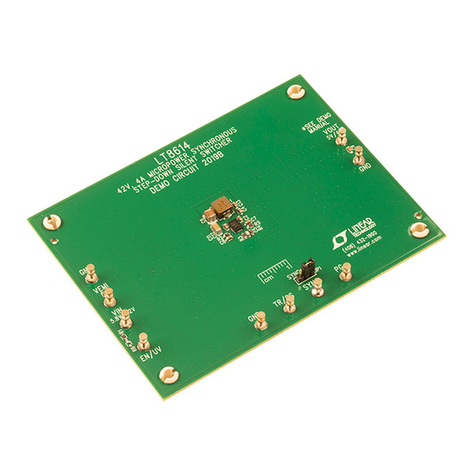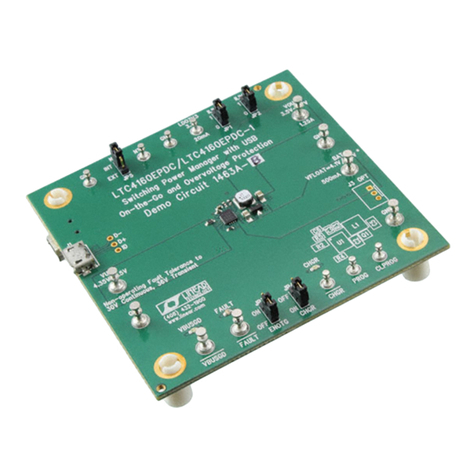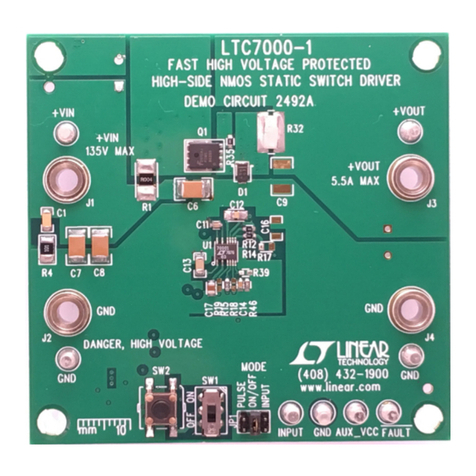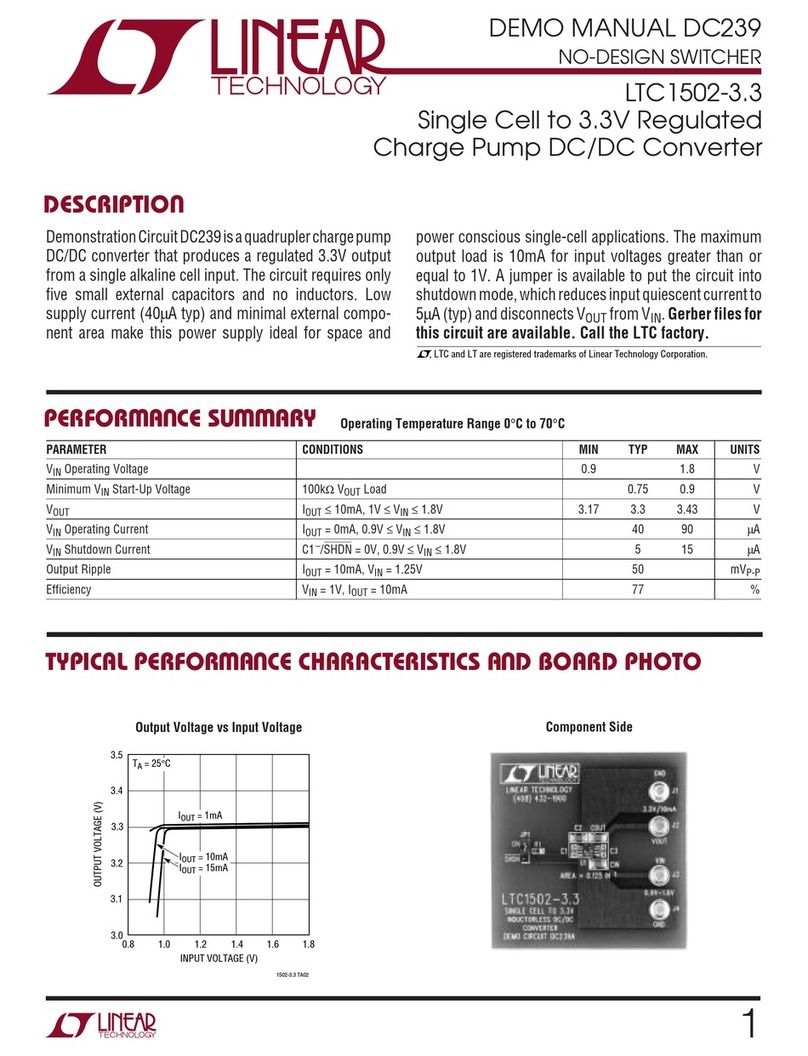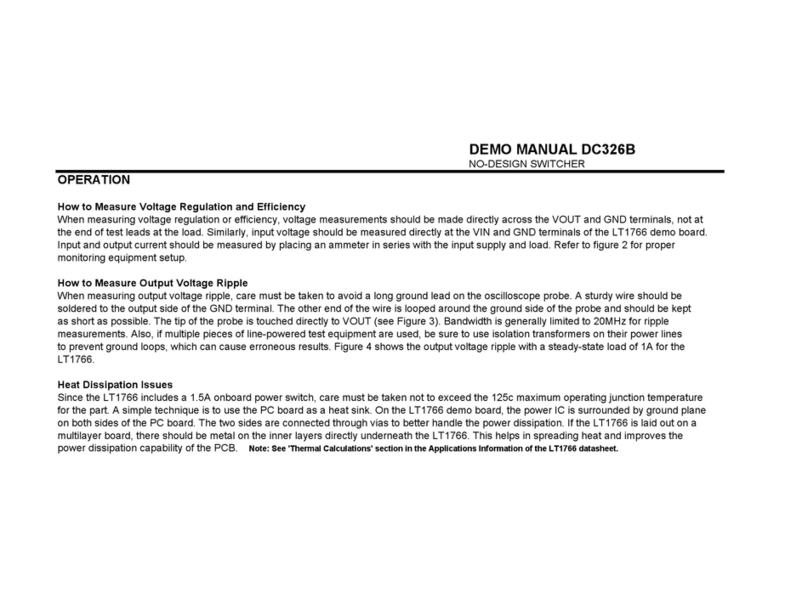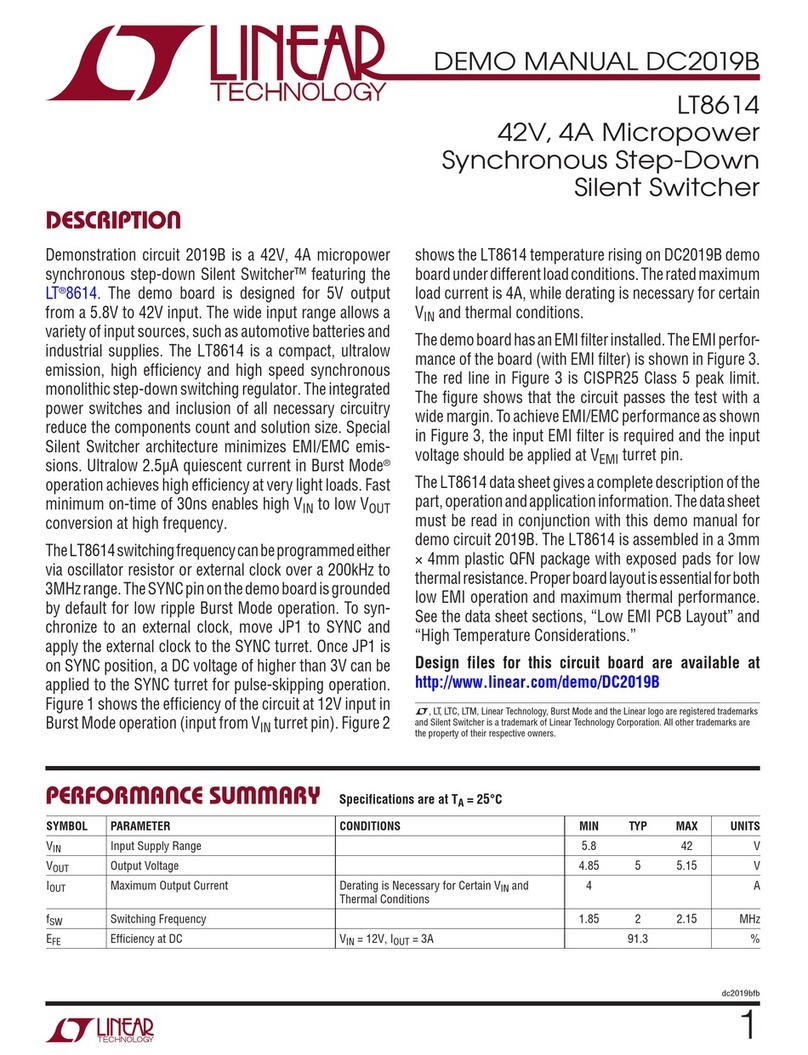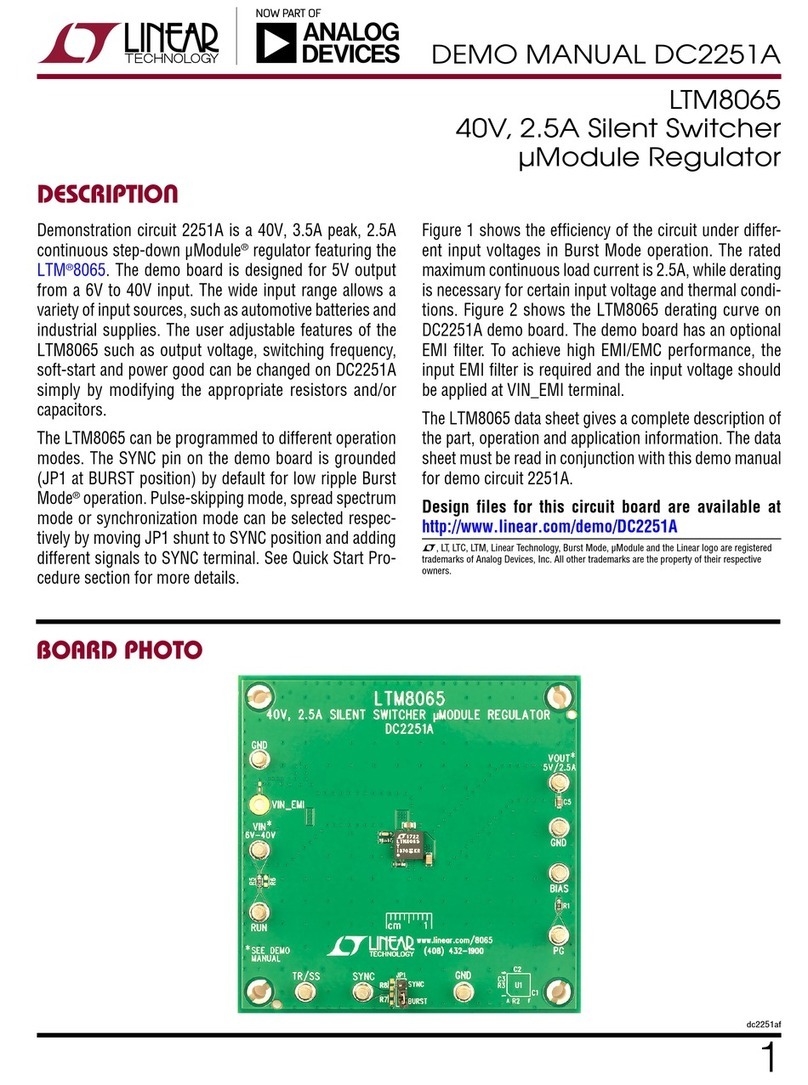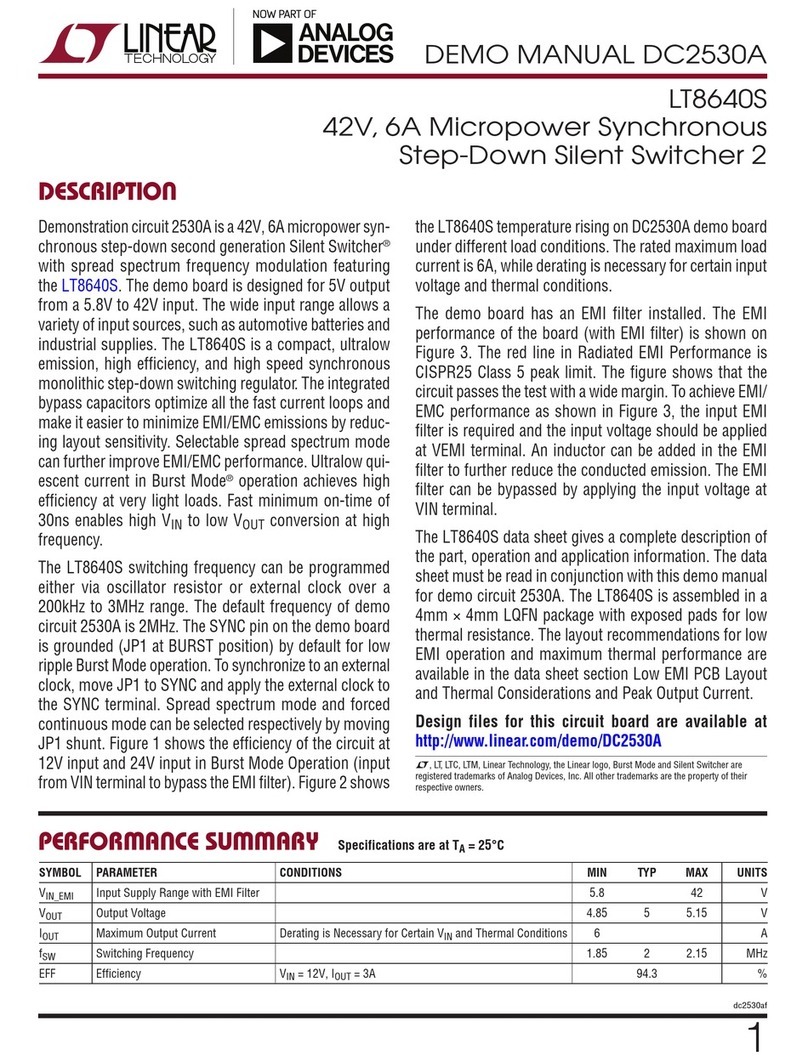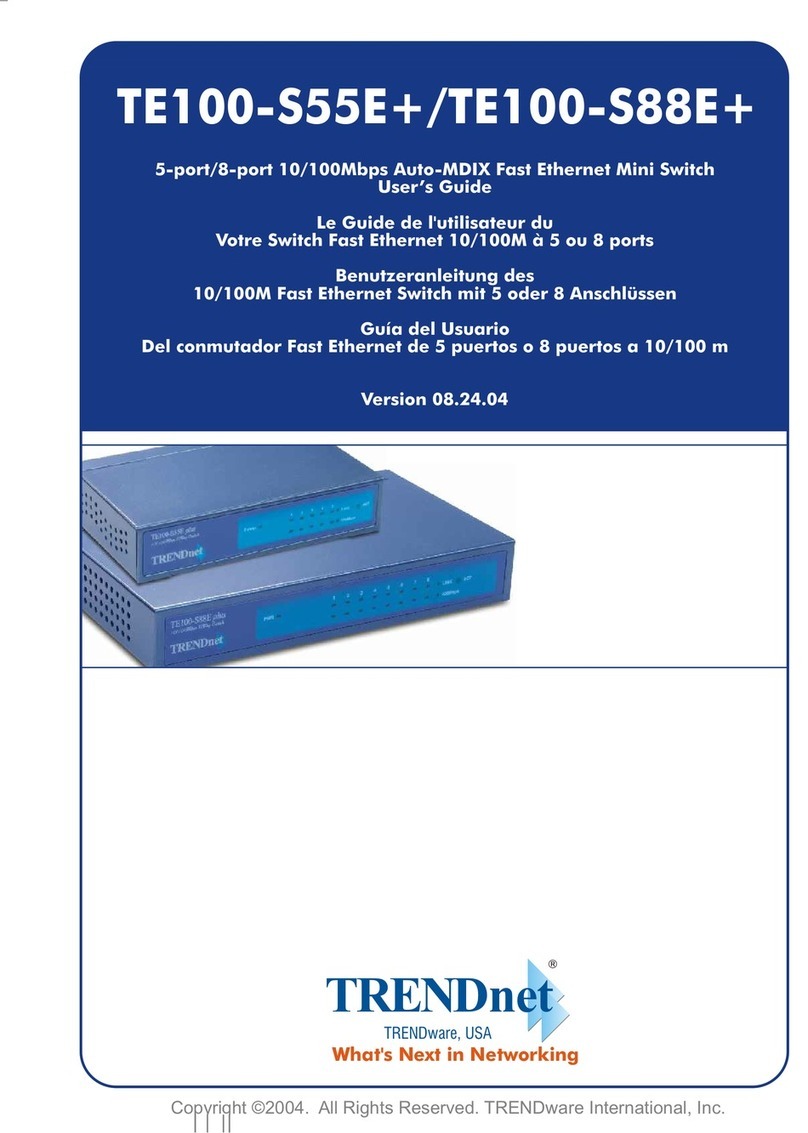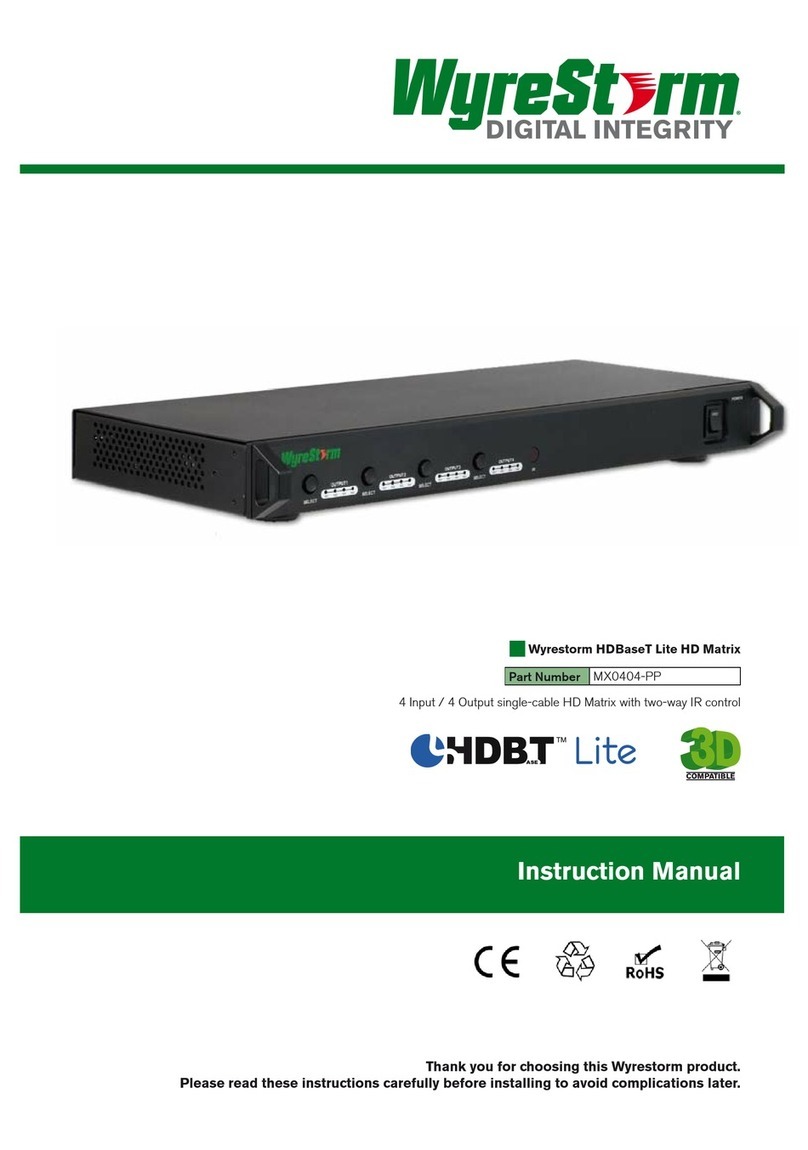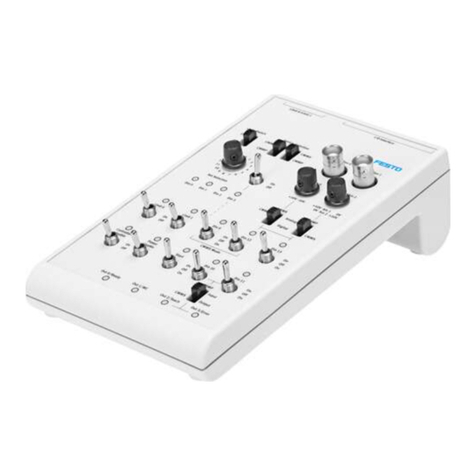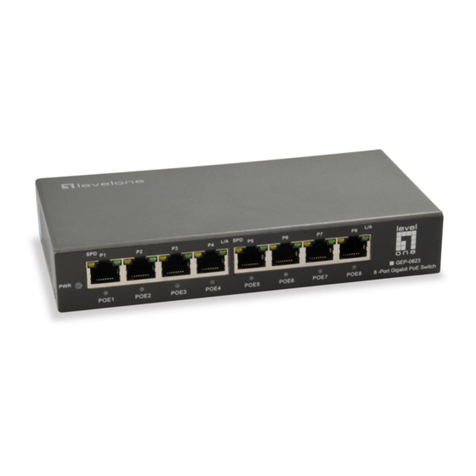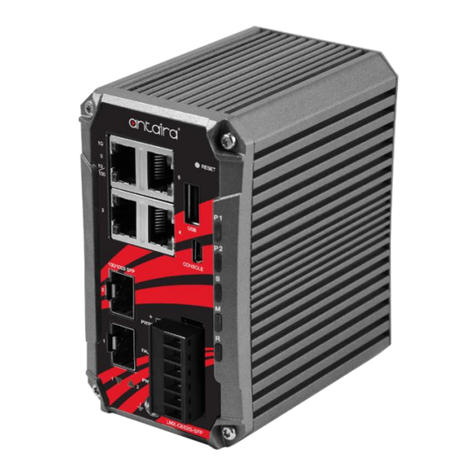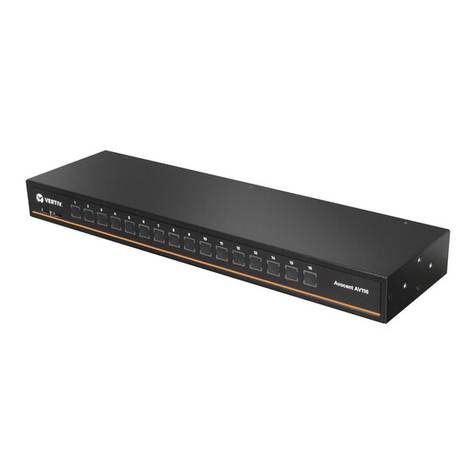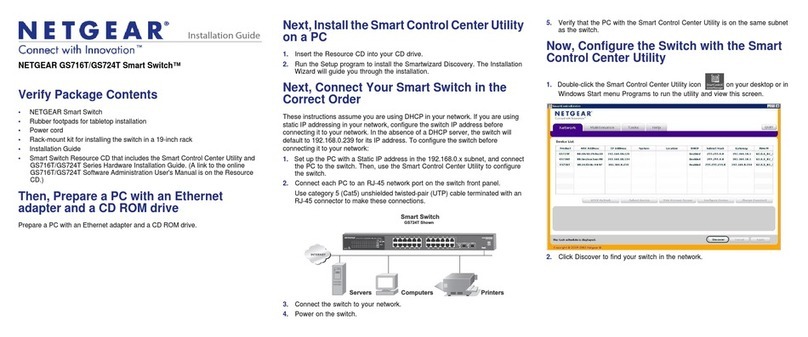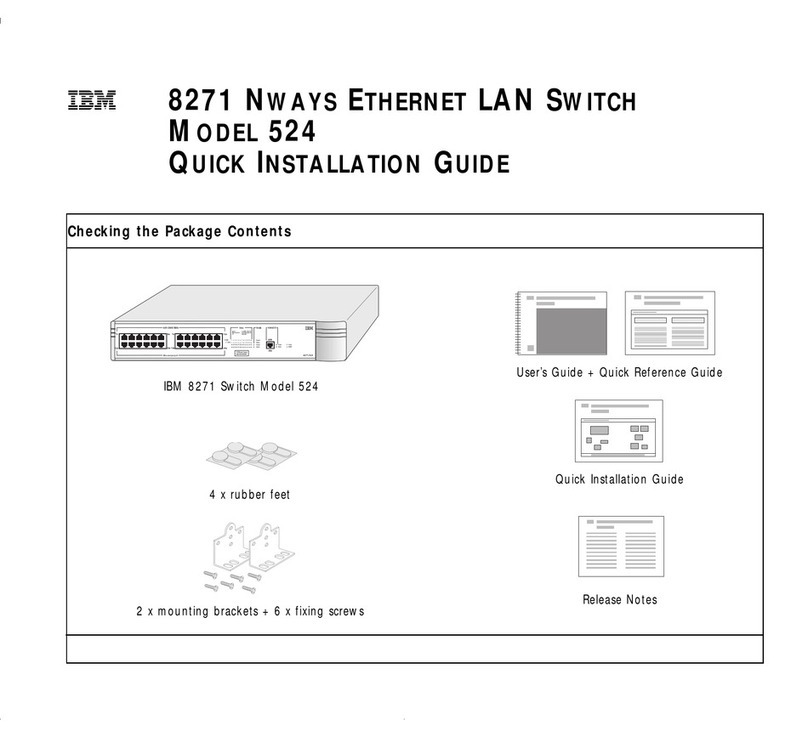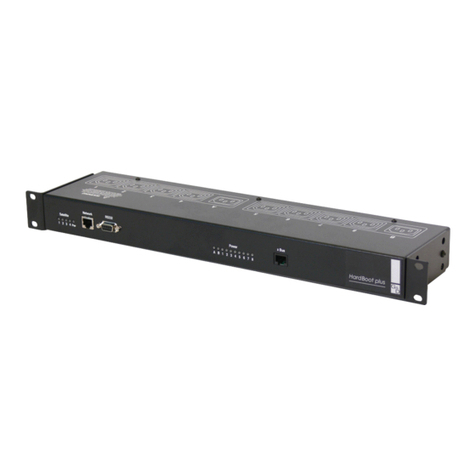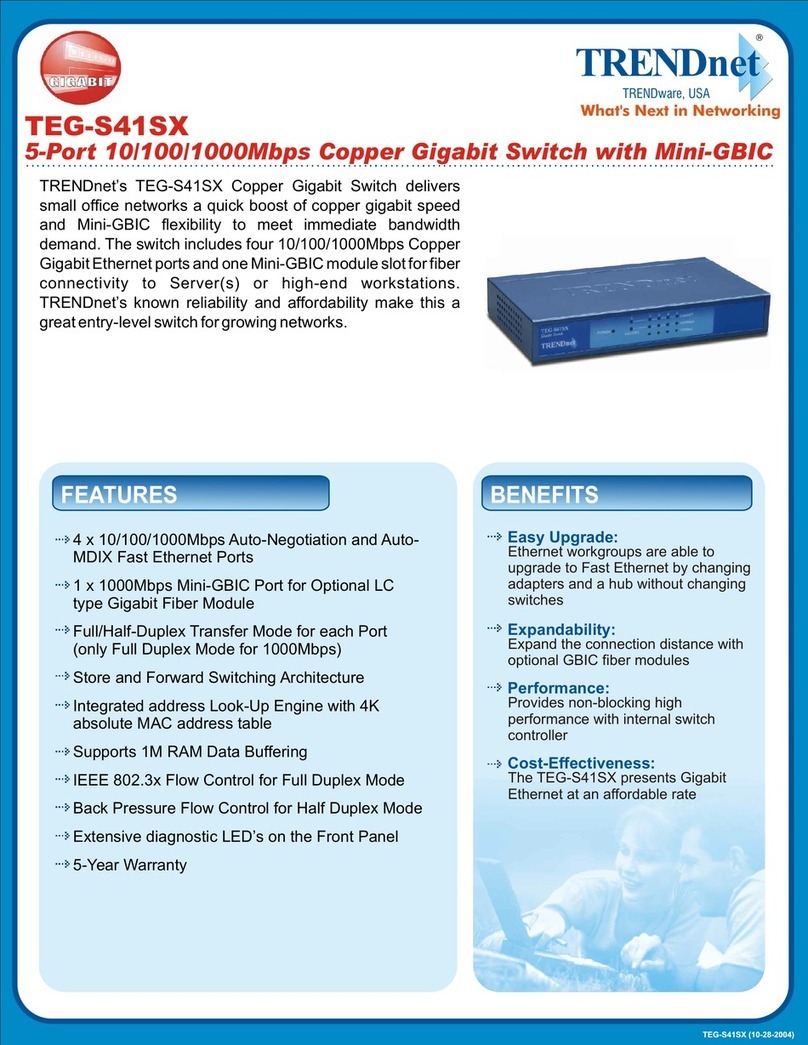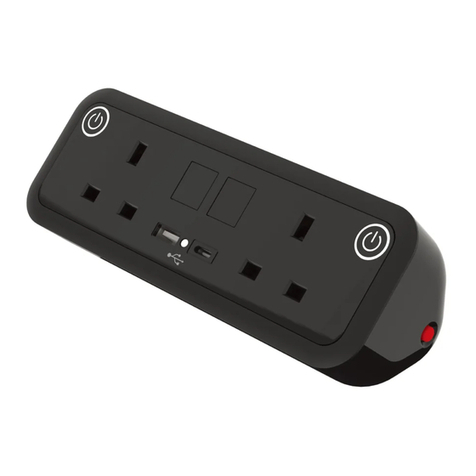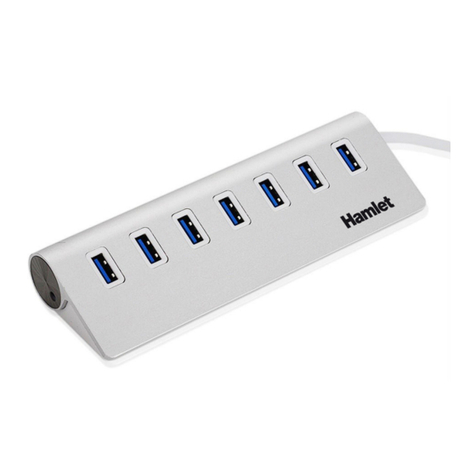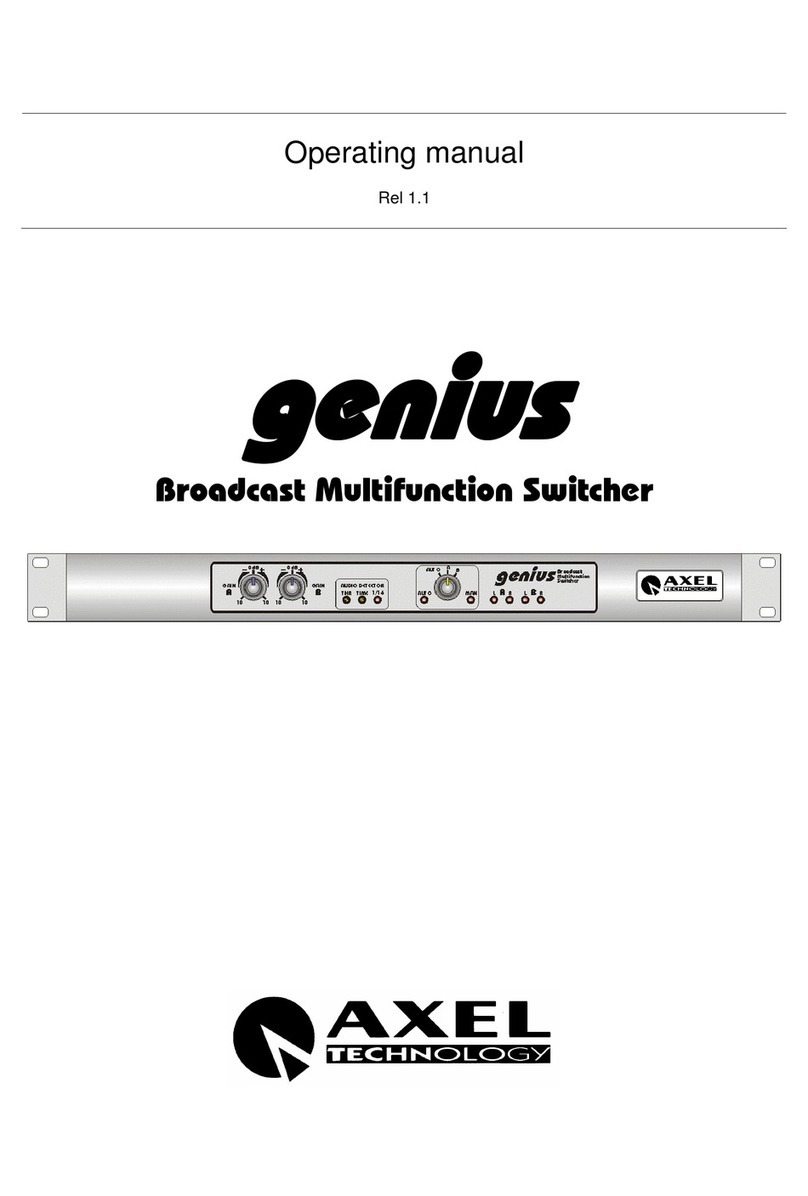
8
DEMO MANUAL DC252
DESIGN-READY SWITCHER
The output capacitors are generally determined by ESR
(effective series resistance) and voltage rating rather than
capacitance. The ESR must be small enough that output
ripple voltage and any voltage droop due to high load
current transients stay within the specifications of the
CPU.Theoutputcapacitancemustbelargeenoughtohold
uptheoutputvoltageuntiltheinductorcurrenthasramped
up or down to its new value. With proper OPTI-LOOP
compensation components, the response time is opti-
mized and the output capacitance is minimized. The com-
pensation components installed on the demo board are
appropriatefor the output capacitors specified in theparts
list.
AdditionalmountinglocationsexistforthroughholeSanyo
OS-CON output capacitors, should they be desired. Com-
binations of different types of capacitors have proved to
yield cost effective solutions. ESL (equivalent series in-
ductance), typically not specified, can reduce the effec-
tiveness of the ESR at high load current slew rates, so be
careful in specifying the output capacitor.
Overcurrent Protection
TheRUN/SScapacitor, C
SS1
,
isusedinitially toturnonand
limit the inrush current of the controller. After the control-
ler has been started and given adequate time to charge the
outputcapacitorandprovidefullloadcurrent,C
SS1
isused
asashort-circuittime-outcircuit.Iftheoutputvoltagefalls
to less than 70% of its nominal value, C
SS1
begins dis-
charging on the assumption that the output is in an
overcurrentand/orshort-circuit condition.Ifthecondition
lasts for a long enough period, as determined by the size
of C
SS1
, the controller will be shut down until the RUN/SS
pin voltage is recycled. This built-in latchoff can be over-
ridden by providing >5µA pull-up at a compliance of 4V to
the RUN/SS pin by installing jumper JP2. This current
shortens the soft-start period but also prevents net dis-
charge of the RUN/SS capacitor during an overcurrent
and/or short-circuit condition.
Foldback current limiting is activated when the output
voltagefallsbelow70%ofitsnominallevel,whetherornot
the short-circuit latchoff circuit is enabled.
With the overcurrent latchoff enabled, a slow ramp on the
input voltage may cause the circuit to latch off. Simply re-
cycle the run pin to start. Refer to the LTC1736 data sheet
for details.
Overvoltage Protection
Theoutput isprotectedfrom overvoltage bya“soft-latch.”
When the output voltage exceeds the regulation value by
more than 7.5%, the synchronous MOSFET turns on, and
remains on for as long as the overvoltage condition is
present.Iftheoutputvoltagereturnstoasafelevel,normal
operation resumes. This self-resetting action prevents
"nuisance trips" due to momentary transients and elimi-
nates the need for the Schottky diode that is necessary
with conventional OVP to prevent V
OUT
reversal.
Because of the inherent self-resetting action of the soft-
latch, dynamic changing of the VID control bits does not
latchofftheLTC1736.Whenanewoutputvoltageissetvia
the VID bits, the control loop simply adjusts the output
voltage and the overvoltage protection threshold to this
new level without causing a fault.
The overvoltage threshold tracks the new output voltage,
protecting the load at all times. Figure 3a and Figure 3b
both show an example of a dynamic VID code change
resulting in a programmed output voltage change from
1.5V to 1.3V at a constant 5 ampere load current. At the
instantthe VID code is changed, the control loop beginsto
respond to the new output voltage, and the power-good
output is asserted low since the new programmed output
voltage is outside the 7.5% window. When the new output
voltage is within 7.5% of its new programmed value, the
power-good signal goes high. Figure 3a shows a VID code
change with the FCB pin low (Burst Mode operation
disabled). Figure 3b shows a dynamic VID code change
with Burst Mode operation active. If dynamic VID changes
arerequiredandBurstModeoperationisdesired,connect
the PGOOD output (E1) to the FCB/Sync input (E4) and
remove jumper JP1. This connection automatically forces
continuous operation whenever the power-good output is
low, providing fast response to VID changes regardless of
load current.
Active Loads— Beware
Beware of active loads! They are convenient but problem-
atic. Some active loads do not turn on until the applied
OPERATIO
U












